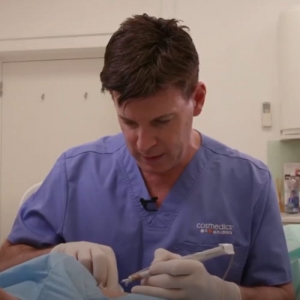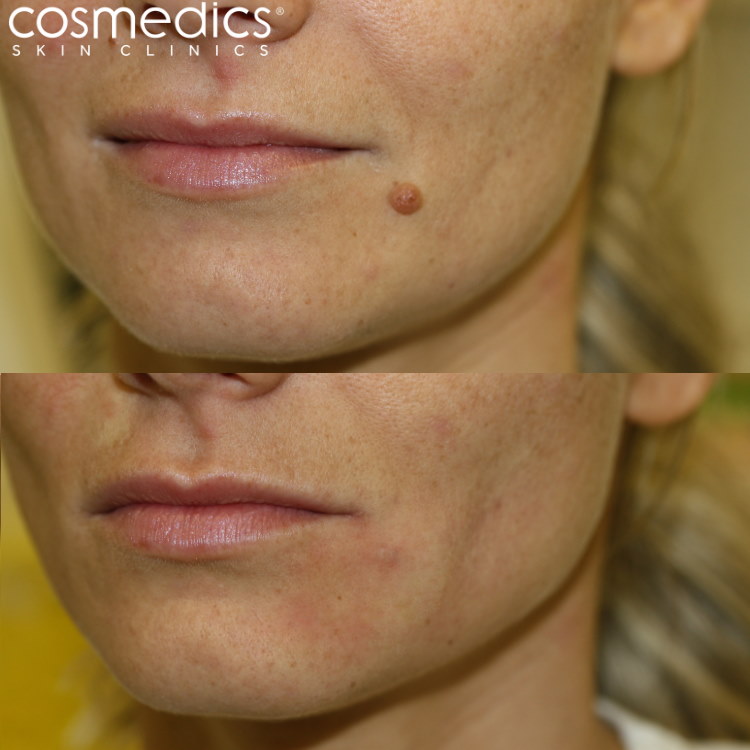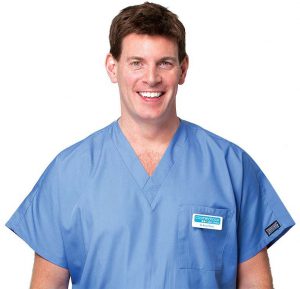
New video shows Dr Ross Perry carrying out ellipse excision mole surgery on a patient’s foot, as the mole had recently changed colour and size. He explains:
“Will’s very kindly sent in a photo of a mole that has changed recently.
“This is a picture of it and as you can see it’s quite dark and he’s also described as actually changing and quite new.”
Will’s mole had changed in both size and colour over the last year or so.
Having a mole on top of the foot is not uncommon. Given the sun exposure and propensity for burning the feet, it is sensible to be alert for changes in the area. Indeed, clients can be rightly concerned about any mole that changes or looks ‘odd’ or different to the others.
In a new video from Cosmedics Skin Clinics, Dr Ross Perry examines the mole with a dermatoscope device, checking the detail of the mole architecture. Ross tells Will:
“So the fact that it’s a new mole is changing and it’s different from any other mole that you have on your body in my opinion I think it would be better just on the safe side just to remove it send it off to the lab get it tested and then we’ve got a bit of peace of mind that hopefully it’s all okay.”
After local anaesthetic, Dr Perry carefully removes the mole using ellipse excision technique. Ellipse excision is suitable for flat moles. The doctor or surgeon uses a scalpel to cut around the mole, after which the wound is cauterised and then closed with tiny stitches.
The mole itself is sent to an independent lab for testing, something Cosmedics Skin Clinics carry out for all moles as best practice.
Will says:
“I got a message from the clinic saying that all was clear, that my mole wasn’t a melanoma and so that was a relief obviously.”
Private Mole Checks & Removal
The London Mole Removal Centre is a private company, offering private mole checks and mole removal treatment for unwanted moles. The experienced doctors and surgeons also offer removal treatment for a range of other skin lesions (e.g. cysts, skin tags, warts, verruca, lipoma, xanthelasma).
All consultations and treatments are carried out in person by doctors who are specially trained in the latest laser and skin surgery techniques and are highly experienced in the field.
Further advantages of private treatment at the London Mole Removal Centre include:
- No waiting lists
- Fully trained doctors, registered with GMC
- Moles can often be removed in the same appointment as the consultation, saving the need for a repeat visit and allowing patients to get their skin lesions removed very quickly
- Choice of 4 clinics in London and also Bristol
- Removed moles tested with report provided
For more information or to book a consultation, please complete the form on this web page or call 020 7731 3791.


 Dr Ross Perry
Dr Ross Perry Popsugar UK delivers its summer roundup of the best ways to protect young skin from the sun’s harmful rays in:
Popsugar UK delivers its summer roundup of the best ways to protect young skin from the sun’s harmful rays in: